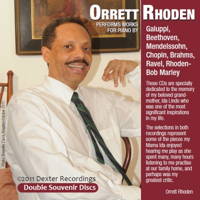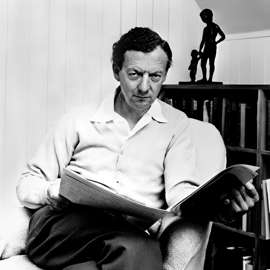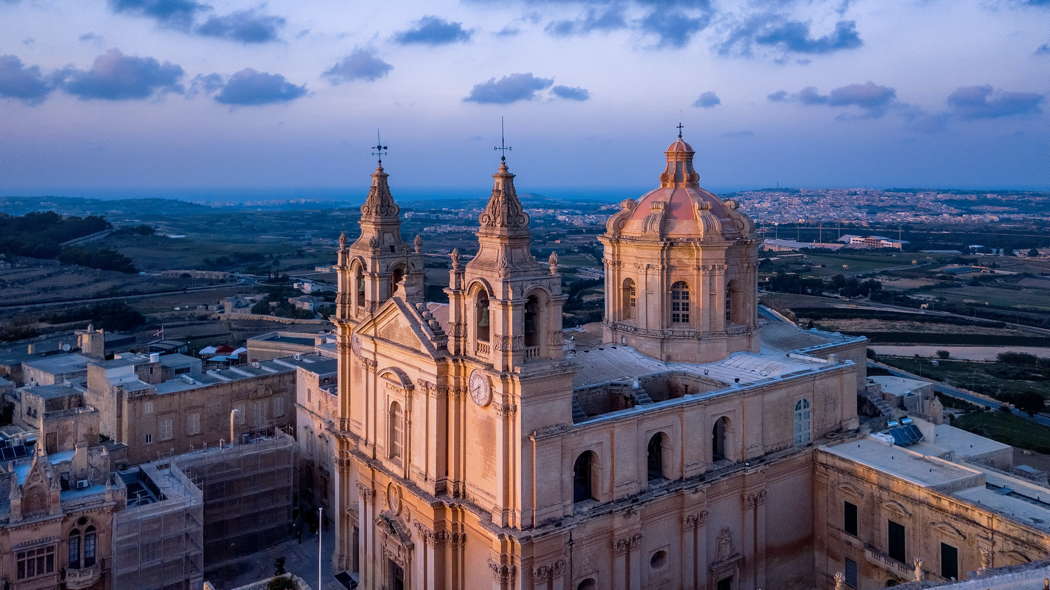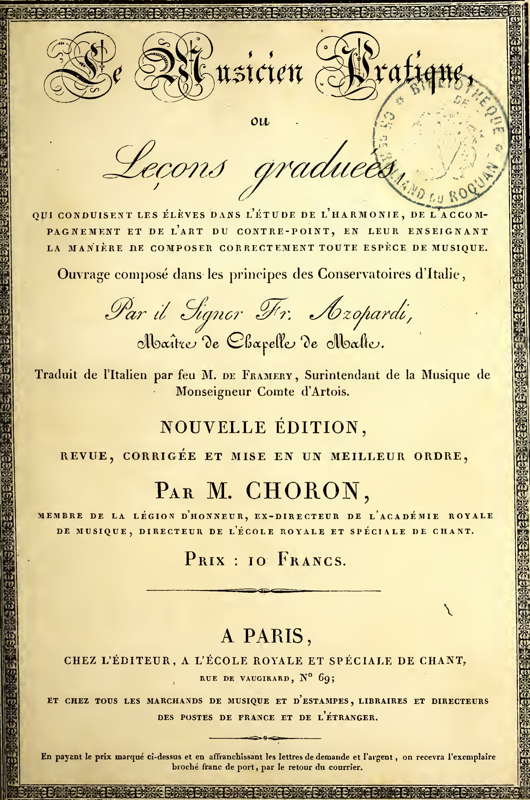 SPONSORED: CD Spotlight. Most Remarkable - Jamaican pianist Orrett Rhoden, heard by Bill Newman.
SPONSORED: CD Spotlight. Most Remarkable - Jamaican pianist Orrett Rhoden, heard by Bill Newman.
All sponsored features >>
 SPONSORED: Ensemble. Last Gasp of Boyhood. Roderic Dunnett investigates Jubilee Opera's A Time There Was for the Benjamin Britten centenary.
SPONSORED: Ensemble. Last Gasp of Boyhood. Roderic Dunnett investigates Jubilee Opera's A Time There Was for the Benjamin Britten centenary.
All sponsored features >>
 DISCUSSION: John Dante Prevedini leads a discussion about Composers, individuals or collective?, including contributions from David Arditti, Halida Dinova, Robert McCarney and Jane Stanley.
DISCUSSION: John Dante Prevedini leads a discussion about Composers, individuals or collective?, including contributions from David Arditti, Halida Dinova, Robert McCarney and Jane Stanley.
Francesco Azopardi

A snippet of a Maltese classical composer, introduced by SIMON FARRUGIA
The composer Francesco Azopardi was born on 5 May 1748. His parents were Salvatore and Anna Azopardi and his birthplace was Rabat, a suburb of Mdina, the old capital city of Malta.
It is not exactly known what inclined Azopardi to the art of music from a young age. At the time, the great musical centre in Malta was Mdina, where St Paul's Cathedral is situated.

St Paul's Cathedral, Mdina, Malta in 2019 by Mike Nahlii
It may be that since Azopardi's birthplace was so near the cathedral, he might have been inspired towards sacred music, which was particularly taken care of by the Cathedral Chapter. At the tender age of fourteen, Azopardi was enrolled at the Sant' Onofrio Conservatory in Naples to further his musical studies. [i] Naples was a natural destination to study music, and the 18th century Neapolitan school stood for elitism and perfection. The Sant' Onofrio Conservatory was one of three conservatories in Naples during the eighteenth century, the other two being the Santa Maria di Loreto Conservatory and La Pietà dei Turchini Conservatory. From these three renowned conservatories emerged great musicians, such as Traetta, Piccini, Sacchini and Gugliemi. The famous Nicolo Piccini is believed to have been Azopardi's teacher of composition. It is noted that Piccini was pleased with Azopardi, as were the people of Naples, who encouraged him to remain in Naples. The Neapolitans were familiar with the names of Paisiello, Cimarosa and Piccini, who were very successful in Naples. It is also believed that Carlo Cotumacci (died 1785) and Joseph Doll (died 1774) were also his tutors. [ii] Cotumacci was a student of Alessandro Scarlatti and was a prominent organist and composer. Musical instruction at Sant' Onofrio usually lasted eight years but it took only four years for Francesco Azopardi to complete his studies at the Sant' Onofrio. [iii] After successfully completing his studies, Azopardi gave music lessons to the nobility of Naples and in various monasteries.
Here in Malta, members of the Cathedral Chapter were impressed by Azopardi's success in Naples and communicated with him on various occasions. In 1772, while still working abroad, Azopardi donated a 'Solemn Mass for Four Voices and Instruments' to the Cathedral Chapter. This was Azopardi's third Mass; the first was composed in 1768 when he was still a student, while the second Mass was composed in 1770. The Cathedral Chapter in Mdina demanded a high level of musicianship for the services rendered at the cathedral as a maestro di cappella. Consequently, Maltese musicians travelled abroad to study the musical art at the best schools in Italy in the hope of securing this prestigious post. Fr Benigno Zerafa, one of Azopardi's contemporaries, also went to Naples to further his musical studies. [iv] Upon returning to Malta in 1744, the Cathedral Chapter secured his services and appointed him as maestro di cappella. Without any doubt, the sublime music of Fr Zerafa left its mark on Azopardi. Fr Zerafa had a long and brilliant career and was unwilling to retire, even in his old age. This remarkable musician died in 1804 when Azopardi was nearing the end of his own career. Long before the death of Fr Zerafa, the Cathedral Chapter wanted Azopardi to be appointed as maestro di cappella at a time when Fr Zerafa still held this prestigious position. Therefore, in 1773, Mgr Giovanni Pellerano, the Bishop of Malta, asked Azopardi to return to Malta to be appointed as church organist at the Cathedral of Mdina. Besides the position of church organist, Azopardi was entrusted with teaching the choir and its cantors, as well as performing new compositions on a regular basis. Azopardi had the same privileges as those bestowed on the maestro di cappella so that practically, Azopardi held this post unofficially. However, following the death of Fr Zerafa in 1804, Azopardi became the official maestro di cappella.
Notably, Azopardi was a prolific composer of sacred music. His main output was for the Cathedral of Mdina. In fact, he wrote more than 230 compositions for the church. An overview of Azopardi's works shows a dominant combination of compositions for SATB choir and orchestra. Indeed, twenty out of his thirty-one Masses are scored for SATB choir and orchestra. The same combination is used for forty Psalms out of the seventy-six he composed. In his 1802 oratorio entitled La Passione di Cristo on a text by Pietro Metastasio, Azopardi showed his musical mastery. In this work, he followed the examples set by the masters of the Neapolitan school. Preceding the oratorio, Azopardi composed a 'sinfonia' written also in the style of the Neapolitan school. However, various churches around Malta commissioned him to compose appropriate music for their annual feast. He composed the Levita Laurentius for the church of St Lawrence in Vittoriosa, In Sepulchrum for the church of St Philip of Aggira in Zebbug (Malta), and Sacerdos et Pontifex for the church of St Nicholas of Bari in Siggiewi. [v] His last composition for the Cathedral was an antiphon, which was commissioned by the Cathedral Chapter only two days before the feast. In spite of the short notice, the Vade Anania was composed in a single day. Indeed, Azopardi succeeded in composing a splendid piece of music scored for a tenor solo. The Vade Anania was first performed in January 1809 and it brought to an end the previous 'cantus firmus' style. A few days later, on 6 February 1809, the maestro died in his home in Rabat at the age of sixty-one after having served the Cathedral under three bishops. [vi]
Besides being a prolific composer of sacred music, Azopardi also composed secular music, such as duets and arias based on texts by the renowned Metastasio. One of his famous duets was 'Nei Giorni Tuoi Felici' (1784), based on a text that both Piccini and Paisiello also set. Azopardi also composed some instrumental works.
A noteworthy fact is that Azopardi was bestowed with an extraordinary memory. This contributed to the excellent unity of ideas in his compositions. He was also a very good teacher, but he only taught males since he had a reserved and scrupulous character. However, Azopardi made an exception when he tutored a female, namely, Marianna Schembri, the daughter of Judge Giovanni Schembri. Through his tuition Marianna Schembri developed into an excellent pianist. His students developed into skilful organists, singers and composers. The young musician Pietro Paolo Bugeja (1761-1828) and Nicolo Isouard had Azopardi as their tutor. Bugeja continued in the footsteps of his master, by studying in Naples and then succeeding Azopardi as maestro di cappella after the latter's death. [vii]
Azopardi used to recruit the best singers available. The soprano was prohibited to sing in religious ceremonies by the Church Authorities. Therefore, he employed the castrato as a substitute to the soprano. During Azopardi's days, the great castrato Lorenzino sang at the Cathedral, undoubtedly interpreting the composer's works. Other famous castrati included Marino, who was brought over to Malta from Naples on the recommendations of both Zerafa and Azopardi.
Azopardi was also responsible for the School of Music within the Cathedral Chapter. This institution reached high standards thanks to Azopardi's tutorship. Besides his compositions, Azopardi wrote a treatise on the art of composition and counterpoint. Il Musico Pratico, as this treatise was called, was highly praised by famous musicians of the time. [viii] This work was translated into French and published in Paris in 1786. This translation was a great success and was used as a textbook for the teaching of counterpoint in the Reale Conservatorio di Musica in Paris.

Title page of the French edition of Il Musico Pratico by Francesco Azopardi
The French occupation of Malta between 1799 and 1801 almost stopped Azopardi from composing any more music. However, after two unproductive years, Azopardi continued to compose as before. Devoting his entire life to the service of the church and music, he remained a bachelor all his life. When the maestro died, he was buried in the Cathedral Church he loved so much. [ix] In 1870, the Cathedral Chapter decided to erect a marble plaque in his memory inside the Cathedral. He was the first maestro di cappella to receive such an honour. On a more international scale, Azopardi may be regarded as one of the prominent composers of the late eighteenth century Neapolitan school.
Copyright © 27 July 2021
Simon Farrugia,
Malta

MORE CLASSICAL MUSIC ARTICLES ABOUT MALTA
FURTHER INTERVIEWS, PROFILES AND TRIBUTES


